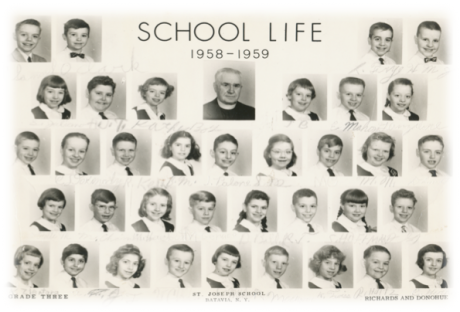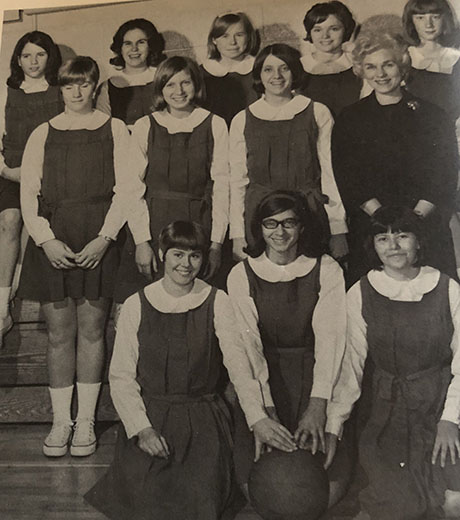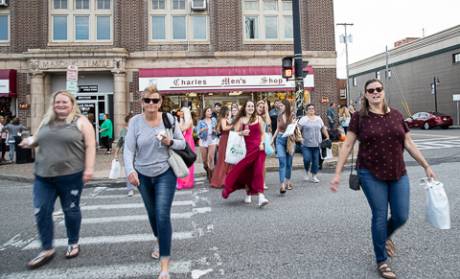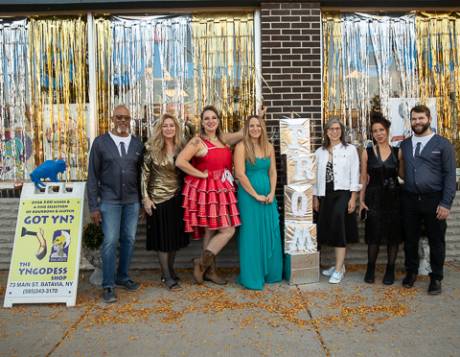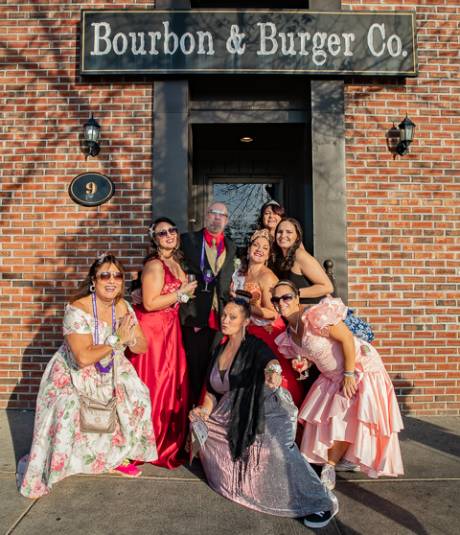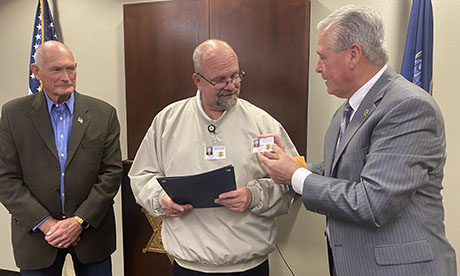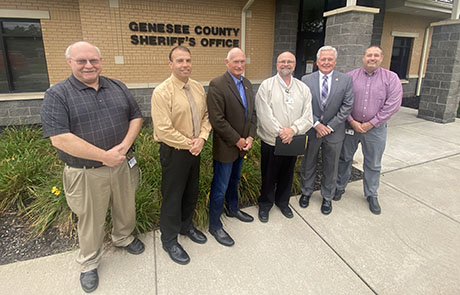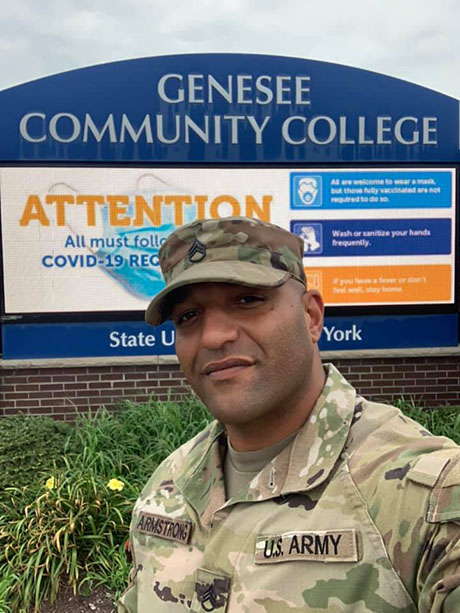The chief medical officer at Rochester Regional Health today said that due to nursing home admission limitations as many as 80 patients who are ready to be transferred to long-term care facilities or rehabilitation centers are stuck in the system’s hospitals.
“There are, on any given day, in our … hospitals, a combined 60 to 80 patients in this category,” Dr. Rob Mayo said. “So, it is a considerable number.”
RRH is an integrated health care system with nine member hospitals, including United Memorial Medical Center in Batavia.
Mayo (photo at right) took part in a video press conference with Adam Bello, Monroe County executive; Dr. Michael Mendoza, Monroe County commissioner of public health, and Dr. Michael J. Apostolakos, chief medical officer at University of Rochester Medical Center Strong Memorial and Highland Hospitals.
The session focused on the vaccine mandate imposed upon health care workers by Gov. Kathy Hochul and its effect on staffing at hospitals and nursing homes, as well as the situation in schools and delays in receiving care at hospital emergency rooms.
Mayo said RRH is working with the other health systems and community partners to alleviate the hospital-to-nursing-home logjam.
“What we do is continue to care for them, and we continue to look for options,” he said. “We work with our partner home care agencies … but, by and large, it is a challenge to do this.”
All three doctors emphasized that employee vaccination rates at their hospitals are very high – up to 99 percent at RRH and URMC locations – but acknowledged that lower levels at nursing homes are causing significant problems.
“Among nursing home staff not all staff fit into the same categories,” Mendoza offered. “When you look at the positions, the nurse practitioners who work in the nursing homes, the vaccination rate is like among other positions – upwards of 99 percent.
“What we’re seeing among other staff, particularly the nurse aides and CNAs (Certified Nursing Assistants) and so forth, their vaccination rate more appropriately parallels the demographic from which they are representing. So, if many live in the city (of Rochester), their vaccination rate as a population is roughly the same as the vaccination rate that we’re seeing in the city.”
Mendoza called it “an absolute concern … that represents a disparity in care and health access that we’ve been seeing all across this pandemic. It is a very important problem.”
He said nursing homes are limiting the number of admissions from the hospitals in order to “keep appropriate ratios in place.”
“Right now, unfortunately for the rest of the health care system, they’ve decreased their admissions, which is creating a bottleneck, if you will, across the entire system.”
Apostolakos said the nursing home issue has resulted in the inability to transfer 55 patients in the URMC system – almost 10 percent of its inpatient capacity.
“… those patients are still taking up acute care beds in our acute care hospital,” he said. “It is causing a significant percentage of our beds to be taken up and, therefore, making it more difficult to get patients through the emergency room and into our hospital, and to accept transfers into our facility.”
HIGH PERCENTAGE ARE VACCINATED
Mayo said that as of Monday, more than 99 percent of RRH employees are vaccinated, with less than 1 percent placed on administrative leave because of their unvaccinated status. He also said that a small percentage requested religious or medical exemptions – and those were granted in compliance with New York State regulations.
Those employees who do not qualify for an exemption and refuse to get vaccinated will be terminated sometime in the morning of Oct. 3 (this Sunday), he reported.
“Despite the successes with this vaccination mandate and regulation, we do have understaffed areas,” he said. “Many people are working overtime. We have patients in our hospitals awaiting discharge and we pleased to participate in a community-wide effort to create solutions for hospitals and for nursing homes … so we can all move patients into their appropriate environments as quickly as possible.”
He also said RRH is participating in efforts to managing strains on pediatric practices and the impact of COVID in schools.
Apostolakos said that more than 96 percent of URMC employees have been vaccinated, another 3 percent received religious exemptions and less than 1 percent elected to resign their positions.
“The not so good news,” he said, is the increasing number of COVID cases.
Sixty-nine patients at Strong have COVID, with 15 of those on a ventilator, he said, and another 84 are at other URMC facilities.
“That number continues to increase,” he said, adding that most of those patients are unvaccinated.
He pleaded with the community “to get vaccinated for yourself, for your family, for your community and for our health care workers that have been under stress and strain for the past 18 months.”
Bello said 93.8 percent of workers at Monroe County Hospital are vaccinated, with 61 employees not vaccinated, seven receiving exemptions and one who has resigned.
He said the unvaccinated workers have been placed on unpaid administrative leave for three months, but would be welcomed back if fully vaccinated.
The county executive said employees are working under stressful conditions and that he was disheartened to see people protesting in front of hospitals.
“The patients inside are sick; they’re seeking care. The health care providers are working long hours, under considerable stress. Neither patients nor health care workers deserve the disdain and anger that’s being targeted towards them and where they work,” he said.
MENDOZA: STUDENT ILLNESS INCREASES
Mendoza spoke about situation in schools, noting that they are seeing an unseasonal increase in Respiratory Syncytial Virus or RSV, which causes mild symptoms in school age kids but can be serious for infants, toddlers and older adults.
Also, a growing number of school age children who have contracted COVID-19, he said.
Per state Department of Health guidelines, the only authorized tests are the NAT and PCR tests, he said, and not the rapid antigen tests due to Monroe County’s “high” transmission status.
He said health officials are working with schools to increase testing capabilities, a procedure that is also taking place in Genesee County.
“Do not send your sick children to school. Make sure they are properly masking and follow all of the other safety protocols in place … and if they are eligible, please get them vaccinated,” he said.
EXPECT DELAYS IN THE EMERGENCY ROOM
Both Apostolakos and Mayo said that for the immediate future, delays in the emergency rooms, waiting rooms and even some urgent care centers are inevitable.
The emergency department has a triage process, with priority is given to patients depending upon severity of illness or injury, Apostolakos said, “so the wait could be several hours.”
“We encourage our patients to call their primary care providers to seek health care at urgent care if their illness is less severe,” he advised.
He also said URMC is pausing temporarily some elective surgeries where hospital stays are necessary to ensure there is enough space for patients admitted with COVID and other non-COVID illnesses.
Mayo said RRH emergency rooms and urgent care facilities have been crowded over the last couple weeks.
“It’s disappointing to acknowledge … but waits in our emergency rooms can be long; they can be several hours,” he said.
Many outpatient services have been unaffected, he said, but RRH hospitals are limiting some elective surgeries, primarily at Rochester General Hospital.











